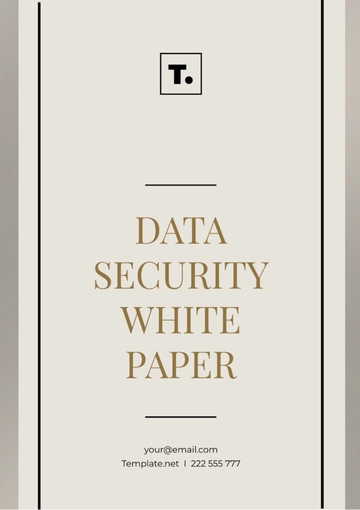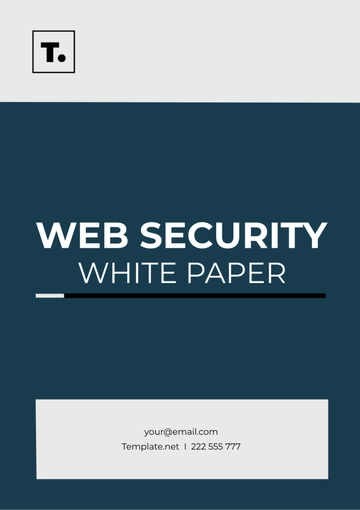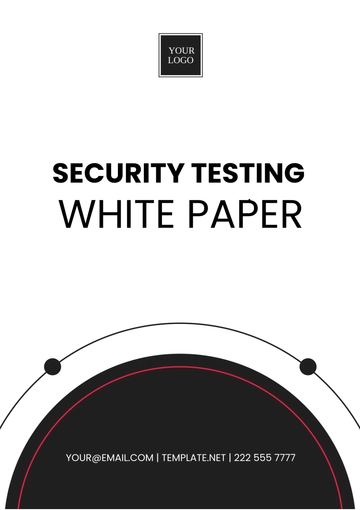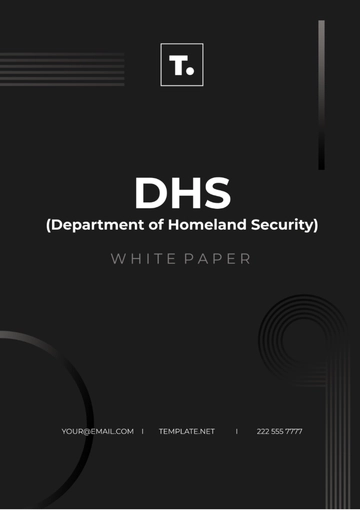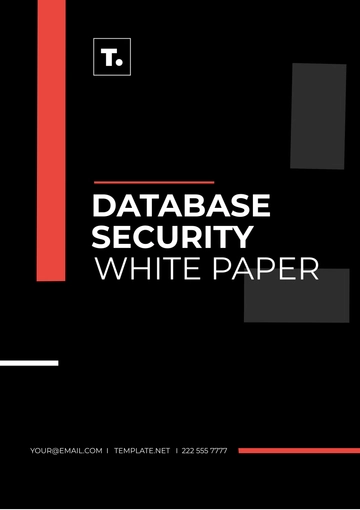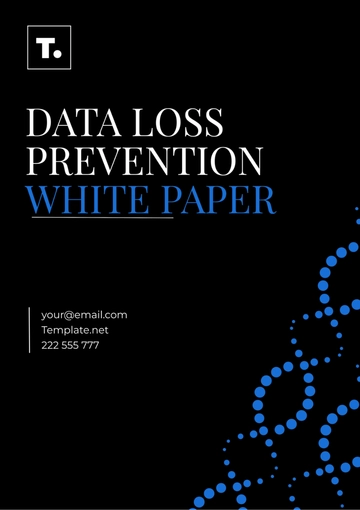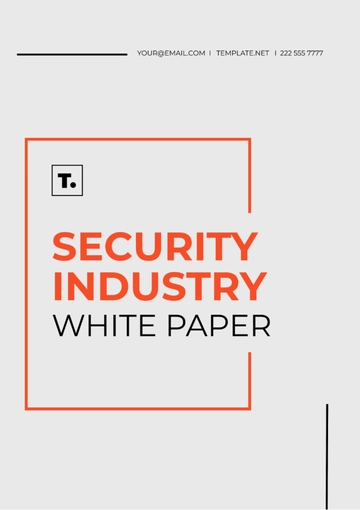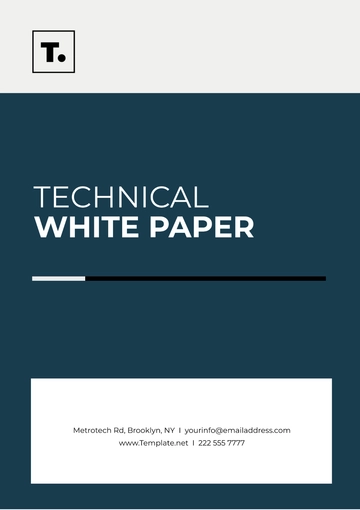Free Web Security White Paper

I. Executive Summary

Key Findings Regarding Web Vulnerabilities: Through comprehensive research and analysis, this white paper uncovers prevalent web vulnerabilities such as data breaches, malware attacks, phishing schemes, DDoS attacks, and insecure APIs. Understanding these threats is crucial for implementing effective security measures.
Overview of Recommendations: To ensure comprehensive web security, implement strong authentication, conduct regular security audits, provide ongoing employee training, adopt secure coding standards, and apply encryption techniques.
II. Introduction
The digital world is plagued by evolving cyber threats like malware, phishing attacks, ransomware, and DDoS attacks, exploiting web vulnerabilities and risking businesses with financial losses, damaged reputations, and legal consequences. This white paper identifies these risks, offers actionable solutions based on best practices, and aims to reinforce web security's importance, enabling businesses to fortify defenses and manage risks efficiently.
III. Web Security Challenges
Data Breaches: Data breaches involve unauthorized access or exposure of sensitive information, leading to privacy violations, financial losses, and reputational damage for businesses and individuals.
Malware and Ransomware Attacks: Malware (malicious software) and ransomware attacks target systems and networks, causing data corruption, system disruptions, and demanding ransom payments for data recovery, posing significant operational and financial risks.
Phishing and Social Engineering: Phishing uses misleading communications to steal sensitive data, while social engineering exploits human psychology to illicitly obtain access or information by leveraging trust or fear.
DDoS Attacks: Distributed Denial of Service (DDoS) attacks overwhelm targeted systems or networks with excessive traffic, causing service disruptions, downtime, and financial losses due to the inability to conduct business operations.
Insecure APIs: Insecure Application Programming Interfaces (APIs) can be exploited by attackers to gain unauthorized access to data or functionalities, potentially compromising system integrity and user privacy.
IV. Best Practices in Web Security
Implementing Robust Authentication Mechanisms: Utilize strong authentication methods such as multi-factor authentication (MFA), biometrics, and secure password policies to enhance access control and prevent unauthorized access.
Regular Security Audits and Penetration Testing: Conduct periodic security audits and penetration testing to identify and remediate vulnerabilities in systems, networks, and applications, ensuring a proactive security posture.
Employee Training and Awareness Programs: Educate employees about cybersecurity best practices, social engineering tactics, phishing awareness, and data protection policies to enhance overall security awareness and reduce human error-related risks.
Adoption of Secure Coding Practices: Implement secure coding guidelines, standards, and automated tools during software development to mitigate vulnerabilities such as SQL injection, cross-site scripting (XSS), and buffer overflows from compromising applications.
Using Encryption and Secure Communication Protocols Encrypt sensitive data at rest and in transit using strong encryption algorithms and secure communication protocols such as HTTPS/TLS to protect data integrity, and confidentiality, and prevent eavesdropping attacks.
V. Case Studies
Case Study 1: Google
Challenge | Google faces constant threats due to its vast user base and the importance of its services, making it a prime target for cyber attacks such as phishing, DDoS, and data breaches. |
Solution | Google uses a comprehensive security strategy that includes two-factor authentication, regular security audits, penetration testing, and employee cybersecurity training. |
Outcome | Google's robust security measures significantly reduce risks, thwart attacks, and safeguard user data and services through ongoing monitoring and quick response to new threats. |
Case Study 2: Amazon
Challenge | Amazon, a global leader in e-commerce and cloud computing, is vulnerable to cyber attacks, data breaches, and exploitation of web infrastructure vulnerabilities. |
Solution | Amazon implements robust security protocols including AWS WAF, DDoS protection, encryption, secure coding practices, and routine security assessments. |
Outcome | Amazon's strong security protocols protect customer data, prevent disruptions, and uphold trust, with collaborative updates and patches reducing risks and exploits. |
VI. Tools and Technologies
SIEM Systems
Function: Collect and analyze security data from various sources to detect and respond to incidents in real time.
Benefits: Provide centralized visibility, facilitate threat detection and response, support compliance monitoring, and improve incident investigation efficiency.
Firewalls and Antivirus Software
Function: Monitor and control network traffic, and detect/remove malicious software from systems.
Benefits: Prevent unauthorized access, block malicious traffic, enforce security policies, and protect endpoints from malware, reducing data breach risks.
Vulnerability Management Tools
Function: Scan for vulnerabilities, prioritize, and report them for effective remediation.
Benefits: Identify and mitigate security weaknesses, reduce attack surface, and enhance overall cybersecurity posture.
Web Application Firewalls (WAF)
Function: Filter and monitor web traffic, detecting and blocking malicious web requests and attacks.
Benefits: Protect web applications from common cyber threats, enforce web security policies, and provide real-time threat intelligence for incident response.
VII. Conclusion
This white paper stresses the importance of web security, outlining key risks such as data breaches and phishing, and recommending best practices including robust authentication and encryption. It includes case studies from Google and Amazon, demonstrating successful security strategies.
VIII. Appendix
The appendix section offers extra materials like detailed analysis, charts, and diagrams on web security, enhancing the white paper's topics and aiding in the application of effective web security strategies. You can consult these resources for further information and guidance.
- 100% Customizable, free editor
- Access 1 Million+ Templates, photo’s & graphics
- Download or share as a template
- Click and replace photos, graphics, text, backgrounds
- Resize, crop, AI write & more
- Access advanced editor
Secure digital landscapes with our Web Security White Paper Template from Template.net. Customizable and editable, this resource empowers you to tailor web security insights using our Ai Editor Tool, ensuring robust protection strategies. Dive into cybersecurity best practices, threat detection techniques, and data protection measures, all crafted to fortify your online presence. Safeguard your digital assets with confidence.

